One of the best baits to fool hungry white marlin is a naked “dink” ballyhoo. A seasoned mate explains the steps he uses to make a “biscuit rig.”
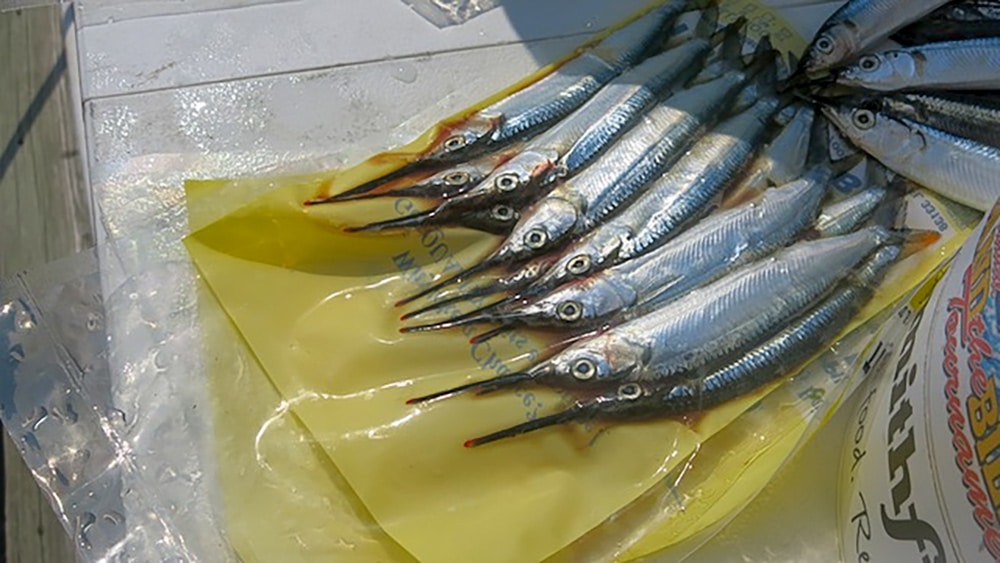
Matthew Spivey has been working the cockpit of Bank Walker, a 60 Omie Tillet custom sportfisher based in Atlantic Beach, North Carolina, for four years. Spivey typically rigs up to 70 ballyhoo and another 50 mullet per day when the bite is on. He orders packages of small ballyhoo from BaitMasters, which are shipped in dry ice.
“I like the extra small ballyhoo for whites,” Spivey explains. “They are easier for the fish to eat and I rig them for the most part on 7/0 circle hooks. If it’s really calm I might add a small chugger to give a little more action. The biscuit rig is absolutely my favorite white marlin bait. If it’s not too rough, they’ll last a few hours before they need to be changed out.”
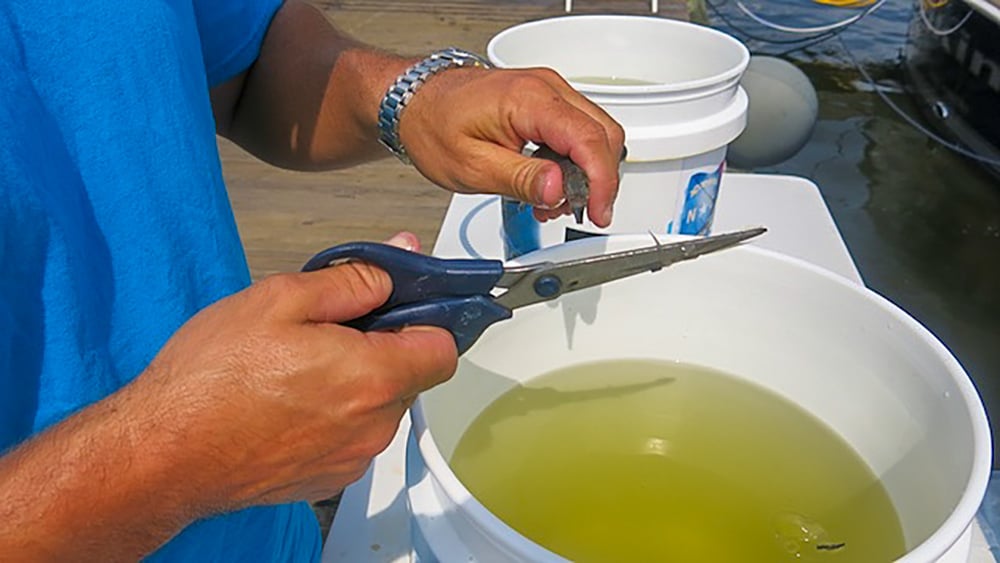
1. Spivey preps each bait by breaking off the beak then uses bait shears to cleanly cut the stub. That leaves a flat edge that runs straight. Snip the pectoral fins also to prevent fouling.
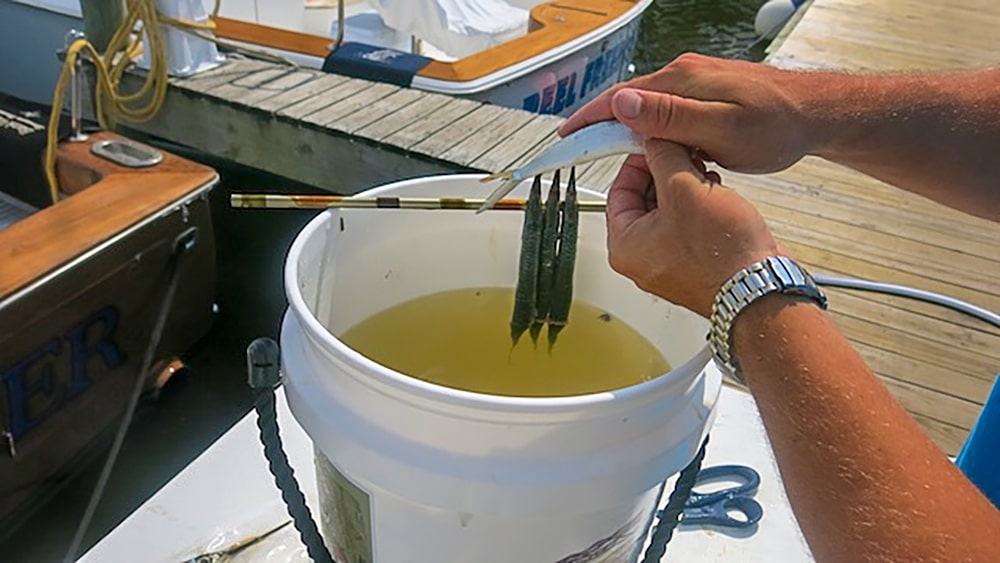
3. Using his thumb and fingers to pinch and squeeze, Spivey works from the gill plates down the body to the vent to milk guts and excrement from the bait body. This also removes air from the swim bladder for better action.
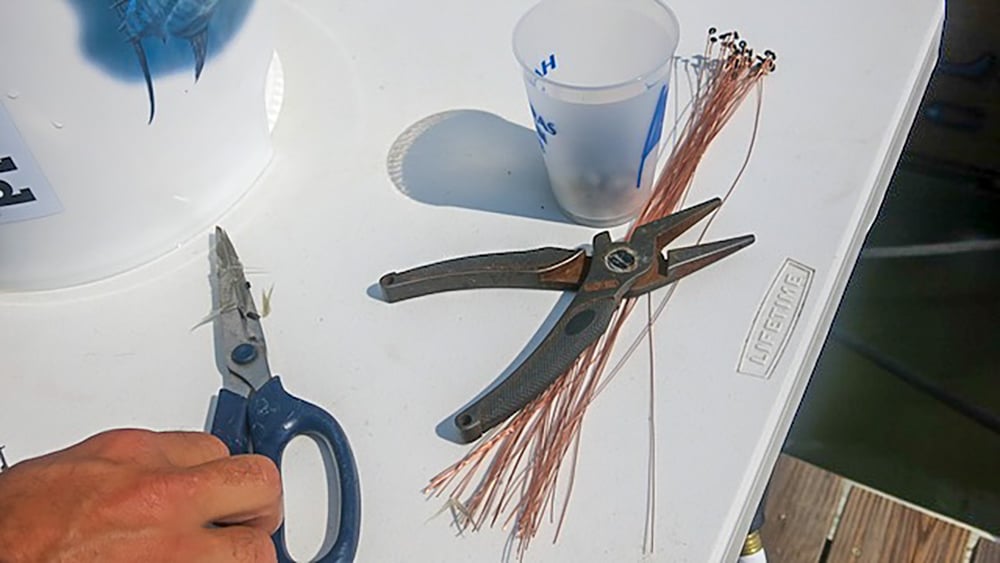
4. Spivey uses 14 inches of copper rigging wire and small black rubber O rings to rig these baits. The O ring, which goes over the point of a circle hook, connects to the wire with a small Haywire Twist.
5. Inserted he tag end of the wire through the top lip and through the lower jaw of the bait Pull tight to seat the O ring atop of the head.
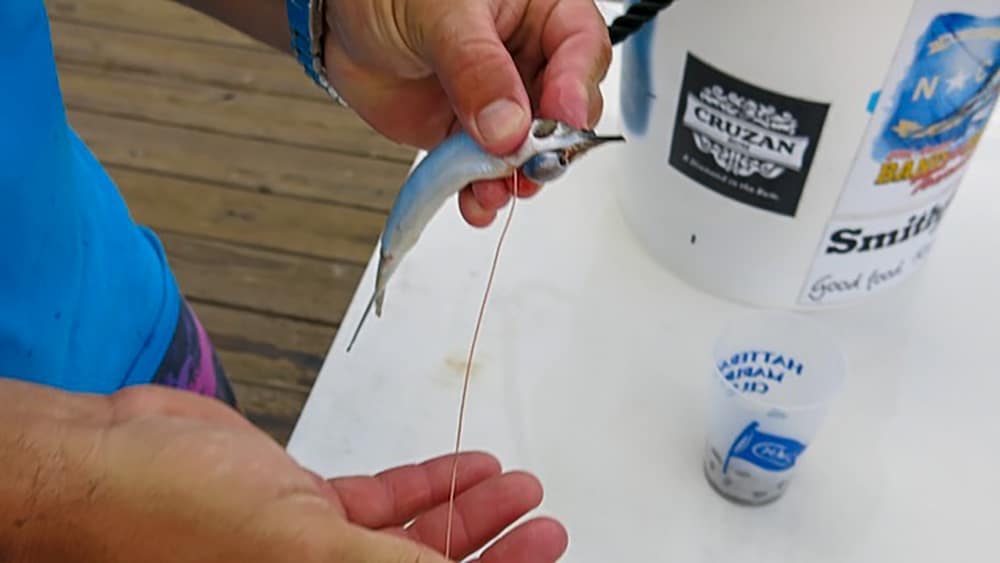
6. Thread a 1/4- to 1/2-ounce chin weight with the wire. Hold the sinker in place then wrap the wire one time behind the gill plates.
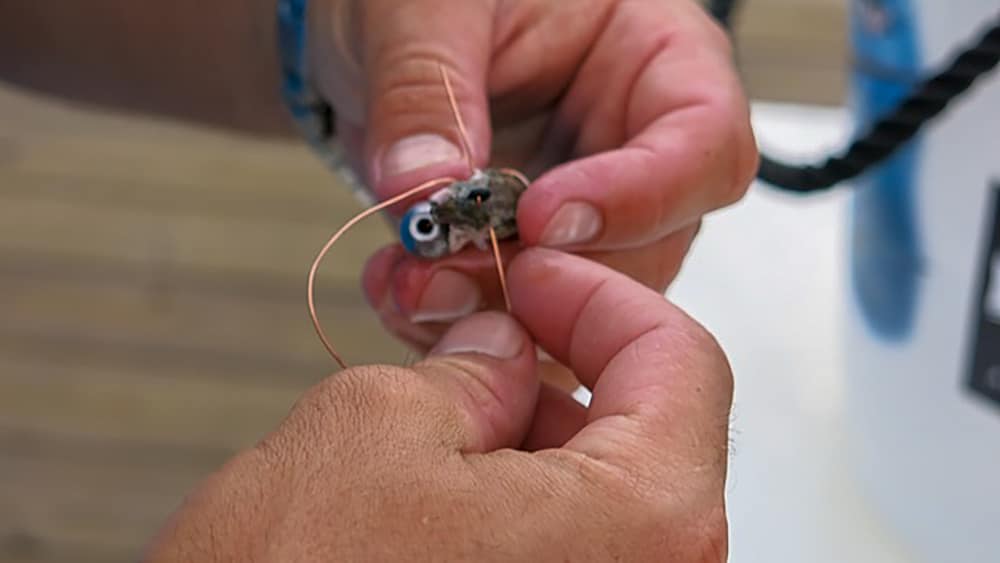
7. Next, wrap two times behind the weight and through the eye sockets, followed by two more wraps in front of the weight and through the eye sockets.
8. One more wrap is added around the head, behind the O ring. The remaining wire is then wrapped in front of the O ring and down the bill stub.
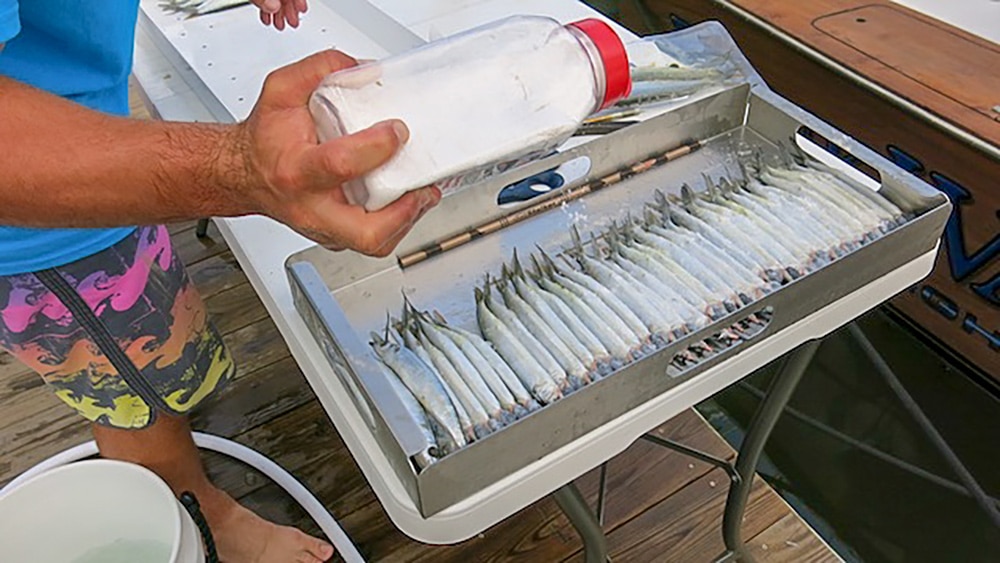
9. Spivey stacks the completed baits lengthwise on their backs in a perforated stainless steel cooler tray. A generous dusting of brining powder is added to the layer. Spivey uses a pre-mix (also from BaitMaster) that contains baking soda, salt and other chemicals. The brine toughens the baits and preserves them. Too much salt, however, will make the ballyhoo hard so they don’t “swim” naturally.
“I pre-tie leaders of 60-pound test fluorocarbon snelled to the circle hooks,” Spivey adds. “I tie a small Perfection Loop on the other end to attach the leader to a snap swivel tied on the main line. I always keep plenty rigged and ready. Whenever the baits are changed out, I change the leader too.”









